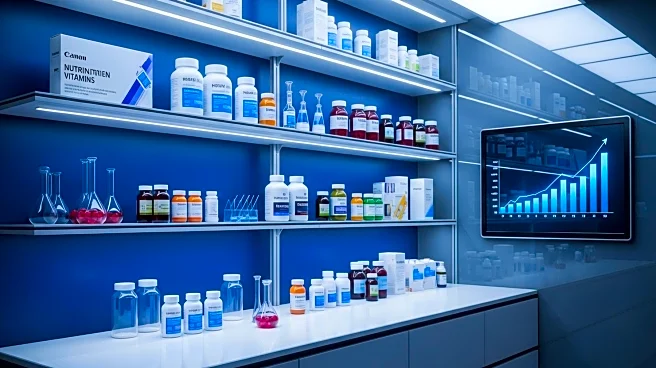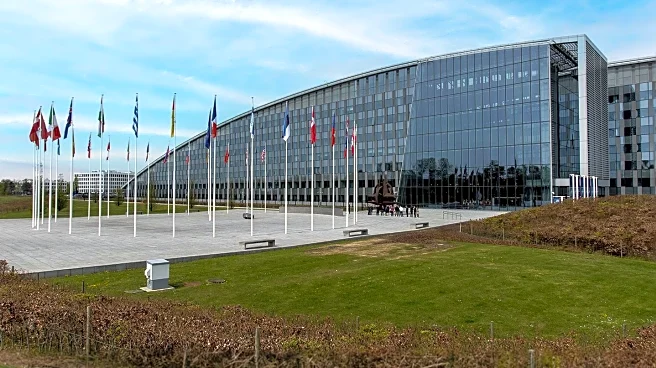What's Happening?
The global Tuberculosis Therapeutics Market is anticipated to grow significantly, reaching USD 2.11 billion by 2025, according to Coherent Market Insights. This growth is driven by increased investments in healthcare infrastructure and the rising prevalence of tuberculosis, particularly in developing regions. The market is expected to expand further, reaching USD 3.50 billion by 2032, with a compound annual growth rate (CAGR) of 7.5% from 2025 to 2032. First-line anti-TB drugs are projected to remain the most popular therapy type, accounting for nearly three-fifths of the market by 2025. North America is expected to maintain its dominance, capturing nearly 40% of the global market share, while Asia Pacific is poised to become a key region for tuberculosis therapeutics companies.
Why It's Important?
The rising incidence of tuberculosis, a leading infectious disease worldwide, is a major factor driving the demand for therapeutic solutions. Over 10 million people develop TB annually, necessitating effective drug regimens to cure infections, reduce transmission, and prevent relapse. However, challenges such as the high cost of advanced TB drugs and low diagnostic rates may hinder market growth. A significant number of TB cases remain undetected, reducing overall demand for therapeutics. Additionally, the expense of novel TB medicines makes them less accessible to low-income patients, impacting market expansion. Despite these challenges, government initiatives and funding are expected to unlock growth opportunities, with efforts to combat TB potentially opening new revenue streams for drug manufacturers.
What's Next?
The market is likely to see increased demand for second-line and novel TB drugs due to the rise in multidrug-resistant (MDR-TB) and extensively drug-resistant (XDR-TB) strains. These resistant types require special treatment plans, boosting the market for advanced anti-TB drugs. Innovations in TB treatment, including shorter regimens and new drug classes, are expected to drive market growth. Approval of drugs like delamanid and bedaquiline has introduced more effective options for treating resistant TB strains. Additionally, growing awareness about TB prevention, diagnosis, and treatment options is leading to earlier detection and better treatment adherence.
Beyond the Headlines
The emergence of drug-resistant TB strains is a critical trend shaping the tuberculosis treatment market. Some strains no longer respond to first-line drugs, necessitating the development of more effective treatments. This situation underscores the importance of continued research and development in the field of tuberculosis therapeutics. Furthermore, advancements in diagnostic technologies are improving the accuracy and speed of TB detection, facilitating timely therapeutic interventions. These developments highlight the need for sustained investment in healthcare infrastructure and public health initiatives to address the global TB burden effectively.










